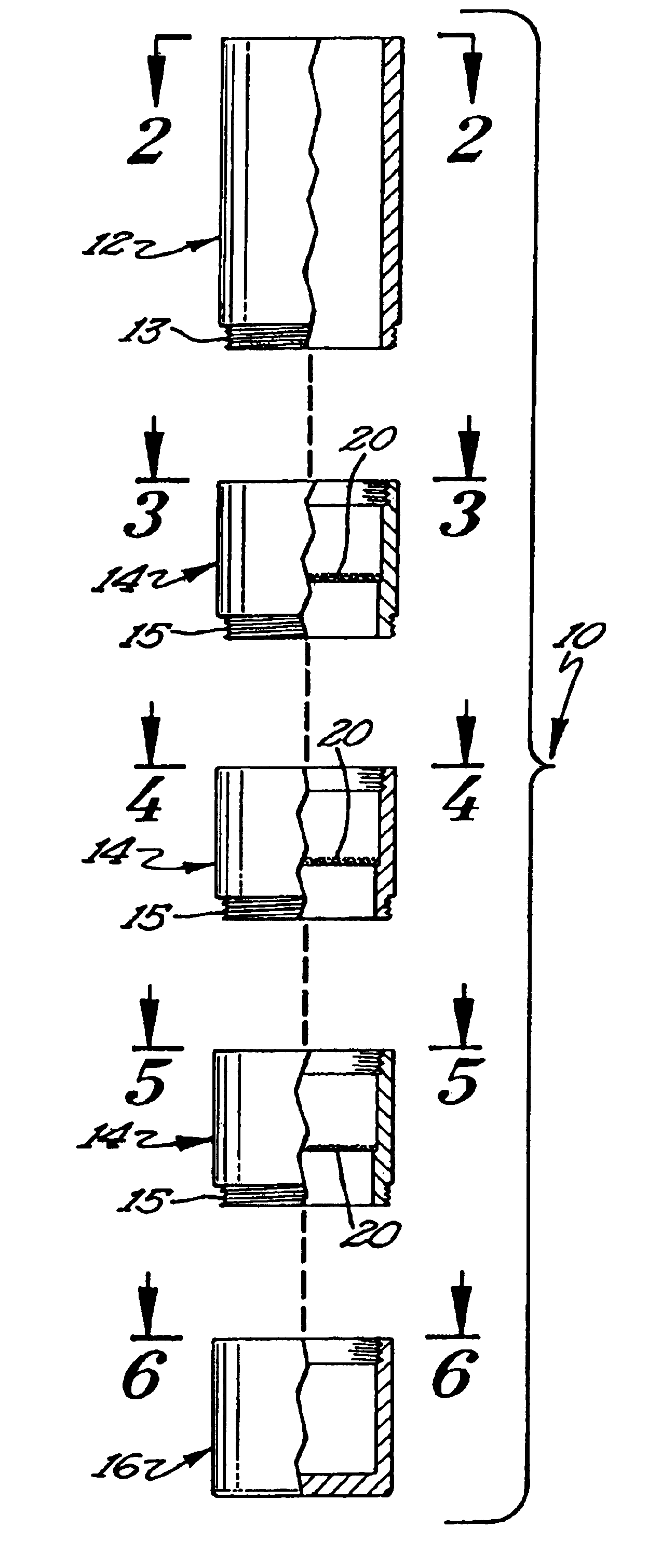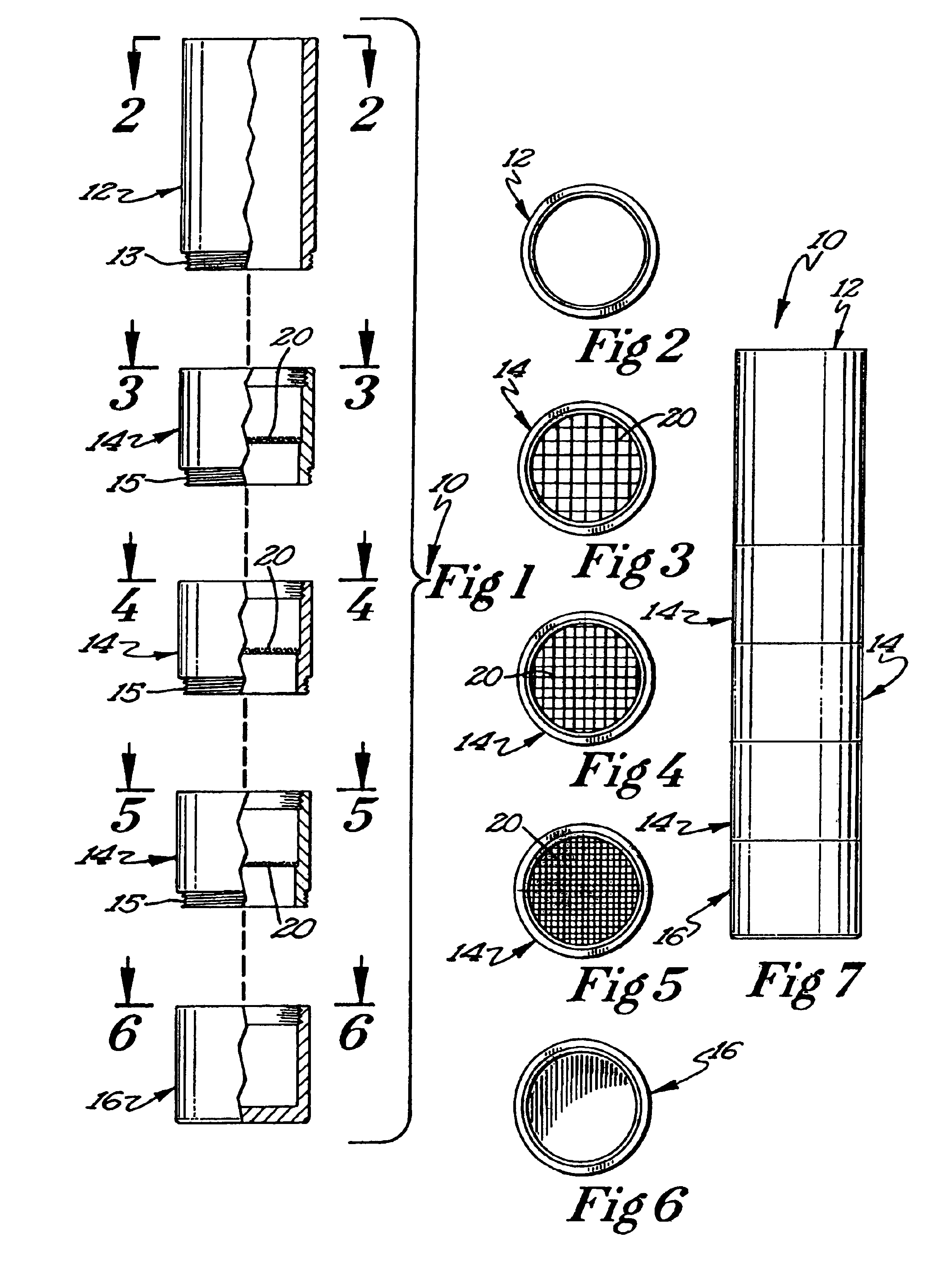Method of determining an average length of reinforcing fiber in a sample of reinforcing fibers
a technology of reinforcing fibers and average lengths, which is applied in the direction of instruments, porous material analysis, specific gravity measurement, etc., can solve the problems of time-consuming statistical sampling methods, skew testing, and inability to accurately determine the size and number of reinforcing fibers that may be picked up in a given sampling, so as to achieve simple, accurate and rapid assessment of reinforcing fiber size.
- Summary
- Abstract
- Description
- Claims
- Application Information
AI Technical Summary
Benefits of technology
Problems solved by technology
Method used
Image
Examples
Embodiment Construction
[0014]Although the disclosure hereof is detailed and exact to enable those skilled in the art to practice the invention, the physical embodiments herein disclosed merely exemplify the invention which may be embodied in other specific structure. While the preferred embodiment has been described, the details may be changed without departing from the invention, which is defined by the claims.
[0015]The present invention comprises a method for extracting reinforcing fibers from a composite material and analyzing those reinforcing fibers to determine an average length. A fiber separator 10 is utilized to separate the reinforcing fibers into groups of substantially identical length. Typically, the method of the present invention will be used to analyze composite molding materials made from a thermoplastic resin and a reinforcing fiber such as fiberglass. It is to be understood that other types of composite materials may be analyzed using the method of the present invention.
[0016]The first ...
PUM
| Property | Measurement | Unit |
|---|---|---|
| temperature | aaaaa | aaaaa |
| temperature | aaaaa | aaaaa |
| temperature | aaaaa | aaaaa |
Abstract
Description
Claims
Application Information
 Login to View More
Login to View More - R&D
- Intellectual Property
- Life Sciences
- Materials
- Tech Scout
- Unparalleled Data Quality
- Higher Quality Content
- 60% Fewer Hallucinations
Browse by: Latest US Patents, China's latest patents, Technical Efficacy Thesaurus, Application Domain, Technology Topic, Popular Technical Reports.
© 2025 PatSnap. All rights reserved.Legal|Privacy policy|Modern Slavery Act Transparency Statement|Sitemap|About US| Contact US: help@patsnap.com


